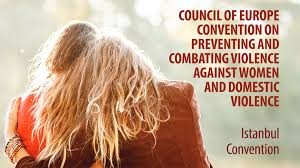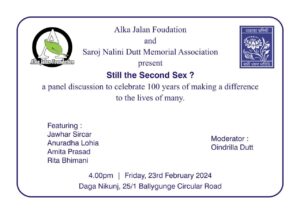 Violence against women, in particular domestic violence is a grave violation of human rights
Violence against women, in particular domestic violence is a grave violation of human rights
According to the Declaration on the Elimination of Violence against Women (1993) and Beijing Platform of Action 1995) the term “violence against women” means any act of gender-based violence that results in, or is likely to result in physical, sexual or psychological harm or suffering to women, including threats of such acts, coercion or arbitrary deprivation of liberty, whether occurring in public or private life. Accordingly, violence against women encompasses but is not limited to the following:
- Physical, sexual and psychological violence occurring in the family;
- Physical, sexual and psychological violence occurring within the general community;
- Physical, sexual and psychological violence perpetrated or condoned by the State, wherever it occurs.
Characteristics of the phenomenon
In all societies, to a greater or lesser extent women and girls are subjected to physical, sexual and psychological abuse, which cuts across lines of income, class and culture. The low social and economic status of women can be both a cause and a consequence of violence against women.
Facts and figures about violence against women and domestic violence
Today according to the UN 125 countries have specific laws that penalize domestic violence, a remarkable gain from just a decade ago.
Although equality between women and men is guaranteed in the constitutions of 139 countries and territories, all too often women are denied justice and protection from violence. The failure stems from a lack of investment and political will to meet women’s needs and protect their fundamental rights.
The UN estimates that 35% of women world wide have experienced physical and/or sexual intimate partner violence or sexual violence by a non-partner at some point in their lives.
Worldwide 700 million women alive today were married as children (below 18 years of age).
An estimated 133 million girls and women have experienced some form of female genital mutilation/cutting in the 29 countries in Africa and the Middle-East where this harmful practice is most common.
Adult women and girls account for 70% of all human trafficking victims detected globally.
In Europe the majority of cases of violence against women have to do with domestic violence. Domestic violence very often leads to the murder of women. According to the NGO Women’s Aid in the UK ¼ of the recorded murders of women are due to domestic violence. In Australia and Canada the percentage is 40-70%. In South-Africa every 6 hours a woman is murdered by her companion. In the UK the Dead Women Walking March aims to raise awareness of the women behind the statistics of domestic violence murders.
Women walk in silence in red ponchos and carrying a candle with the name and the age of one of the 400 women who have been murdered in the UK in the past years. In essence their murders could have been prevented as there were warning signs that were missed or not acted upon. They were not believed.
A EWL survey in France, Spain, Italy and Germany showed that a quarter or more of respondents have experienced violence in their relationships.
The staggering majority of all women participating in the survey think that governments are not doing enough to prevent violence against women. A clear majority of participants, however, ask for more protection measures and better infrastructure for victims of violence, for example eviction of a violent partner, access to safe houses and witness protection.
A joined EWL/Oxfam study shows that the economic recession has led to an increase in domestic/ intimate relationship violence, trafficking in women for sexual exploitation and a rise in prostitution and violent attacks on prostitutes.
Factors that contribute to the perpetuation of violence against women
Factors that contribute to the perpetuation of violence against women and affect society,in particular children are: lack of access for women to legal information, help or protection, lack of legislation that prohibits violence against women and domestic violence, insufficient efforts on the part of governments to promote awareness of the phenomenon and to implement existing laws, lack of educational and other means to deal with the root causes and the effects of violence against women
Impact of sexual violence on the relationship between partners
The impact may be psychical, psychological or sexual problems or problems of reproductive health. The results may also be headaches, stomach pains, abortions, HIV/AIDS, depression, problems of sleep, suicide attempts.
International Day for the Elimination of Violence against women
In 1981 activists marked November 25th as a day to combat and raise awareness of violence against women more broadly. On December 17 1999 the date received its official United Nations resolution. November 25 was chosen because on that day in 1960 the assassination of the 3 Mirabel sisters, political activists in the Dominican Republic, took place. The killings were ordered by the Dominican Dictator Rafael Trujillo (1930-1961).
Convention of the Council of Europe on preventing and combating violence against women and domestic violence
The Council of Europe Convention (Istanbul Convention) opened for signature on 11 May 2011 in Istanbul, Turkey. The Convention aims at prevention of violence, victim protection, and ending the impunity of perpetrators.
As of November 2015 it has been signed by 40 countries and ratified by 19.The Convention came into force on 1 August, 2014.
Added value of the Istanbul Convention
The Istanbul Convention is the first legally binding instrument which creates a comprehensive legal framework and approach to combat violence against women. It recognizes violence against women as a violation of human rights and a form of discrimination. The Convention also contains a number of definitions:
Domestic violence is defined as all acts of physical, sexual, psychological or economic violence that occur within the family or domestic unit or between former or current spouses or partners, whether or not the perpetrator shares or has shared the same residence with the victim.
Gender is defined as the socially constructed roles, behaviors, activities and attributes that the given society considers appropriate for women and men. Gender based violence against women means violence that is directed against a woman because she is a woman or which affects women disproportionately.
The Treaty establishes a series of offences characterized as violence against women. States that ratify the Convention must criminalize several offences including psychological violence, stalking, physical violence, sexual violence including rape, explicitly covering all engagement in non-consensual acts of a sexual nature with a person, forced marriage, female genital mutilation, forced abortion and forced sterilization.
The Convention also includes an article targeting crimes committed in the name of so called honour.
The Convention states that sexual harassment must be subject to criminal or other legal sanctions.
GREVIO Group of experts on action against violence, against women and domestic violence
GREVIO is the independent expert body responsible for monitoring the implementation of the Istanbul Convention. Grevio will draw up and publish reports evaluating legislative and other measures taken by the parties to give effect to the provisions of the Convention. In cases where action is required to prevent a serious, massive or persistent pattern of any acts of violence covered by the Convention, Grevio may initiate a special inquiry procedure. Grevio may also adopt where appropriate general recommendations on themes and concepts of the Convention.
Concerning Grevio membership, article 66 provides that Grevio shall have between 10-15 members and shall take into account a gender and geographical balance as well as multi-disciplinary expertise in the area of human rights, gender equality, violence against women, and domestic violence or in the assistance to and protection of victims. Grevio members must be nationals of the state parties to the Convention. Integrity, competence, independence, availability, and language skills are the guiding principle for the nomination and election of Grevio members. On 4 May 2015 the first 10 members of Grevio were elected by the Committee of the parties. Grevio held its first meeting 21-23 September 2015 in Strasbourg.
What do governments have to do once they ratify the Istanbul Convention?
Prevention: Put in place policies that are necessary to change attitudes, gender roles, and stereotypes that make violence against women acceptable. Train professionals working with victims, raise awareness of the different forms of violence, cooperate with NGOs, the media and the private sector to reach out to the public.
Protection: Ensure that the needs and safety of victims are placed at the heart of all measures. Set up specialized support services that provide medical assistance as well as psychological and legal counseling to victims and their children. Set up shelters in sufficient numbers and introduce free of charge, round the clock, telephone lines.
Prosecution: Ensure that all forms of violence against women and domestic violence are criminalized and appropriately punished. Ensure that excuses on the grounds of culture, custom, religion, or so called honour are unacceptable in any act of violence. Ensure that victims have access to special protection measures during investigation and judicial proceedings. Ensure that law enforcement agencies respond immediately to calls for assistance and manage dangerous situations adequately.
Comprehensive policies: Adopt comprehensive and coordinated policies that place the rights of victims at the centre of all measures.
Best practices on preventing domestic violence in the 27 EU Member States and Croatia 2005-2012.
The European Institute for gender equality (EIGE) commissioned a study on collection of methods, tools and good practices in the field of prevention of domestic violence in the 27 EU Members States and Croatia.
As a first step good practices were selected by state representatives and/or national experts fairly distributed amongst the different domestic violence fields of intervention: training (23%) awareness raising (24%) victim support services (27%) and perpetrator’s programs (31%).
190 good practices were selected which were then analyzed and assessed on the basis of a domestic violence list of criteria in other to identify 30 promising practices. The criteria were the following:
- It has been working well.
- It could be replicated elsewhere.
- It is good for learning how to think and act appropriately.
- It is embedded within a wider gender mainstreaming strategy.
- It shows effective achievement in terms of advancement of gender equality.
Three examples of such practices:
Enough is enough. It is up to you to ask for help, Netherlands. 2007 – 2012
Every year the government of the Netherlands runs a media campaign against domestic violence, using radio, television and the Internet. In 2010 it used an innovative tool. It launched a hoax range of cosmetics designed specifically to allow women to hide the injuries they sustained when they are battered. The products were branded “My Secret Cosmetics” and were promoted using a make believe television interview on a program called women and business. The interview lasted less then two minutes but attracted so much attention that it merited an item three minutes long in the evening televisions news.
The cosmetics were promoted as selling a brand of make-up specifically designed for every woman who has something to hide. Banner ads, mock adverts on fashion and beauty websites drove traffic to the site where the hoax was revealed. In reality a click on the website of the cosmetics led to the campaign message There is a better solution to the problem of domestic violence call 09001262626 for advice and help.
The campaign has had measurable effects. Phone calls for help increased from 35 % to 50 % and willingness to call rose from 50 % to 59 %. Knowledge about the available support centres and what to do in cases of domestic violence rose from 6 % to 11 % among the general public and from 10 % to 21 % for victims of domestic violence. Willingness to visit the website increased from 58% to 72 % for the general public and from 63% to 76% for victims. During the campaign the website had 21.900 visits. The campaign was described as remarkable, attractive and able to provide new information.
Behind the façade. Traveling exhibition, Austria 2005 -2014
In 2005 Austrian NGOs supporting victims of domestic violence decided to take their message to the masses by means of a traveling exhibition. They came up with the idea of telling the story of abuse in the home by mocking up a stand to look like the interior of a flat. Visitors walk from one room to another undergoing an immersive experience which heightens the emotional impact. On the way they gain an understanding of the causes of domestic violence, its dynamics, the forms it takes, children as witnesses to domestic violence, a historical overview of Austrian legislation and ways to seek help and find the resources that are available.Three or four audiovisual installations enable visitors to listen to and watch the stories of eight women who were subject to domestic violence but managed to flee from it.
In another video five girls and boys relate their experiences of witnessing domestic violence.
The video The problem is my wife presents working with violent offenders who beat their wives. The exhibition has won several prizes and has toured 29 locations all over Austria as well as being invited to events abroad. So far it has been seen by 15000 people many of them visiting in school groups.
Court watching to monitor the implementation of the law on victims’ protection against domestic violence, Bulgaria 2005-2014
The job of Court watching involved trained volunteers attending court cases involving domestic violence to note down a set of indicators such as the geographic characteristics of the victims and perpetrators, whether or not a protection order is issued and how many cases are withdrawn or delayed.
The Court Watch Project in Bulgaria started at both Varna regional and Varna district Court in 2006 after a memorandum of cooperation was signed between Varna regional Court and SOS Families at risk Foundation. It is carried out by four local NGOs.
Court monitoring reduces the incidents of bias and discrimination and also improves indicators as the number of immediate protection orders, the range of measures included in the final decisions and the average duration of the law suits. The main benefit provided by domestic violence court watch is that is provides independent monitoring of the law’s implementation. It also enhances the law’s impact by communicating what is observed via the media. Further, it obtains information on the results of the imposed penalties (for instance whether the fines have been paid) and the quantity and quality of the work the judges and their auxiliaries have carried out. Using this information improves the protection of victims of domestic violence, makes judges and prosecutors more aware of the issue of victim protection and increases the visibility of the justice done in cases of domestic violence. The job consists of weekly monitoring of domestic violence cases in the district and regional courts by specially trained monitors, following a questionnaire designed ad hoc for each proceeding. The questionnaires are then processed.
The statistics show that between 2010 and 2011 the number of protection orders issued more than doubled. The average duration for lawsuits under the law for protection against violence shows a falling trend from over two months to less than two months. There is also an improvement in the range of measures included in the final decisions.


